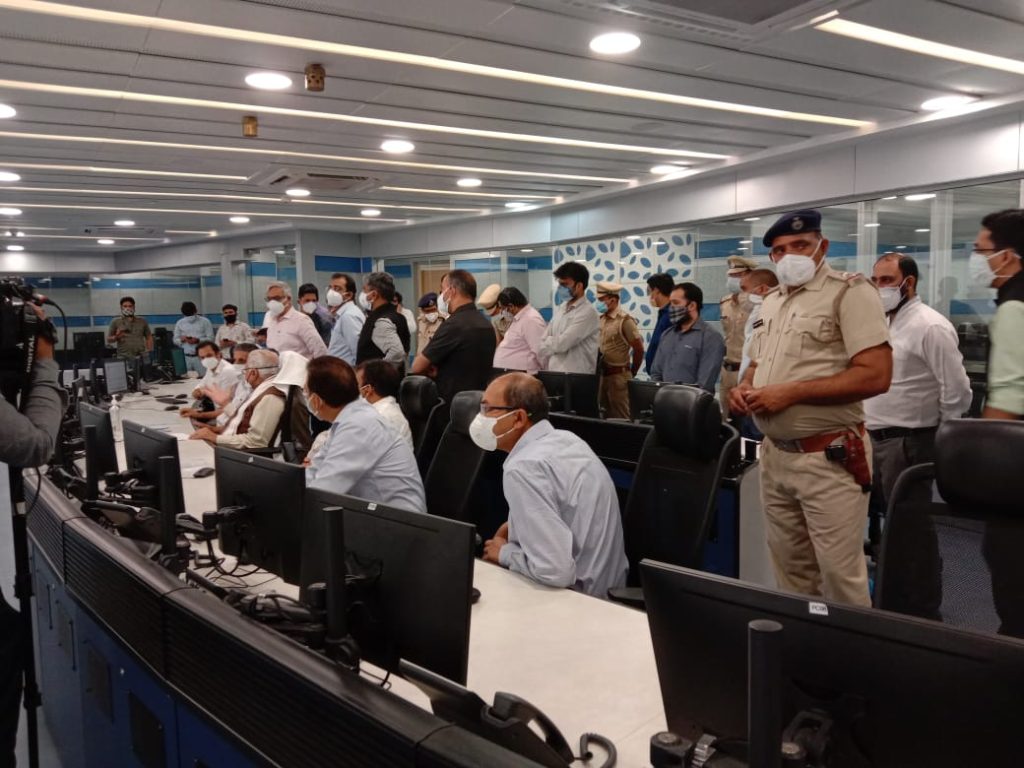The second Covid-19 wave hit India with vengeance adversely impacting the healthcare system with people scrambling for basic necessities like oxygen, hospital bed, medicines and even doctor consultations. The government administration was also trying to implement a slew of measures such as identifying containment zones, stricter measures to limit public movement, figuring out demand and supply of essentials, etc.
There was an urgent need for a tool to establish a people-centric approach from the administration. A tool that would also enable the administration to give a number of services to the patient and encourage them to stay at home as far as possible, medically, to ease the burden on the hospitals. The Chatbot gave us an option to do that to a large extent, even though it won’t cater to a population that is very poor and doesn’t have access to a smartphone.
With DC Gurugram and Gurugram Police leading the Covid Relief Operations, this tech-enabled multi-stakeholder covid-19 management programme was launched on May 5, 2021. Under the initiative, a Covid-19 relief chatbot (+91 96432 77788) was started to help patients isolating at home. This is the first of its kind chatbot in the world providing end-to-end authentic information and services to covid-19 affected patients.
Stage -1 Global Tech for National and Local Impact
The Chatbot became a platform to combine the strength of the public sector and innovation of the private sector. What was on offer for free with limited capacity, now also had a paid option with more specialists and more services such as rt-pcr tests, doctor consultations, delivery services and so on.
The autobot response enabled an immediate response and action with pre-fed options reducing manual workload. A key part of the Chatbot is its ability to give location which is one of the information attributes collected from the user along with name, address and phone number. As explained by Dr Mathew Varghese, a senior doctor at Delhi’s St Stephen’s Hospital, it is important to track timelines in the management of disease. Hence, the details collected enabled us to offer a range of personalised services to the doorstep of the patient, monitor their progress and track symptoms to ensure immediate response in case the patient reaches a critical stage.
At a macro level, this helped in tracking the infection graph geographically, the positivity rate and the identification of the reasons for a higher transmission in specific areas.
Stage-2 Integration of Administrative Services for Quick Response Action
Before the launch of the initiative, all departments were working in silos and inefficiently. The Deputy Commissioner was made the nodal office for the overall management under the Disaster Management Act. However, Gurugram being a Municipal Corporation, a host of services came under different administrative departments such as, bed management was under the Deputy Commissioner ; oxygen and funerals with Municipal Corporation of Gurugram; Manesar is a municipality; Chief Medical Officer was incharge of the frontline health workers; contact tracing was done by the Gurugram police, Data management was divided between a private website (Deputy Commissioner) and Gurugram Metropolitan Development Authority,
and so on.
There was no linkage and had different statistics every day. Establishing a common Integrated Command and Control Center allowed all the above silos to come together. This also helped in mapping infection data in real-time and across sectors.
Integration is also done at the Dashboard level which is a means to be connected electronically. This enabled not only optimising resource allocation, data-driven identification of containment zones but also data-driven policy making.
The dashboard has information regarding beds available and fresh registrations; oxygen availability and supply (both institutional and individual supply); funerals for Covid deaths; online doctors for consultation; medicine availability with location and ability to order medicines; ambulance services and home cooked meals.
The Integrated Command and Control Centre is jointly run by two personnel drawn from DC Gurugram for bed management, two from Municipal Corporation Gurugram for oxygen, four Sub-inspectors from Gurugram Police and Citizen volunteers.
They keep watch on Covid patient requests coming in from the District Helpline 1950 and the chatbot (+91 96432 77788) that automatically records necessary details. The team immediately receives their request. This is then captured on a single dashboard to enable an integrated response. A calling team reaches out to the COVID Patients to provide assistance as quickly as possible.
When integrated, the various teams also have visibility into each other. For instance, hospital bed management dashboard gives insights into how many beds are occupied. The login is given to hospitals to upload data every few hours. Now, a bed will be vacated due to two reasons – discharge or death.
If it is death, then the oxygen team and the funeral team will be alerted immediately. Oxygen team because they know what the actual requirement is and what is now available. Funeral team with the help of the advance information will know that they have to cater to it and identify which designated crematorium is available.
Stage 3: Shorter Response Gap and Decision Making
All the data is generated on a day to day basis which helps in analysing the death rate, positivity rate and hotspots which then enables the delivery of a host of services. The integrated data-based information also helps the policy-makers to take quicker decisions.
Most importantly, the platform is open-source for anyone to partner who wants to provide relief services both paid or free to covid-19 patients. Anyone can donate or loan medical equipment as well.
Similar models have been adopted by Mumbai under Brihanmumbai Municipal Corporation and Delhi Government for Covid-19 management. Ultimately, the aim is to decentralise this model and take it down to the Ward level or Primary Health Centers and build similar integration for many of these services. This model is also built in a way that it can be used for any kind of crisis management in the future.
